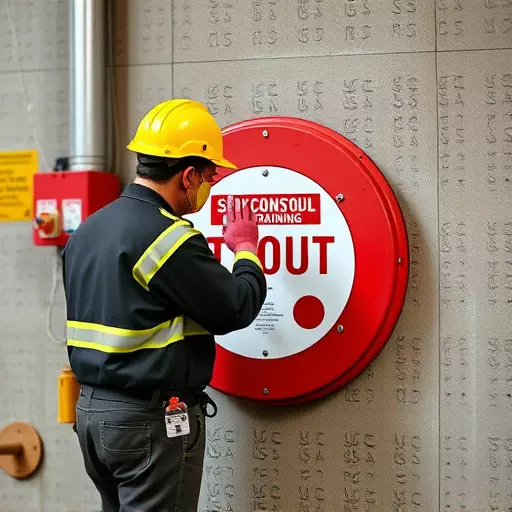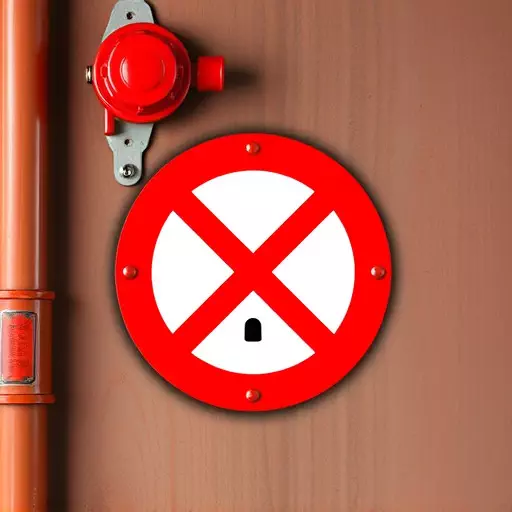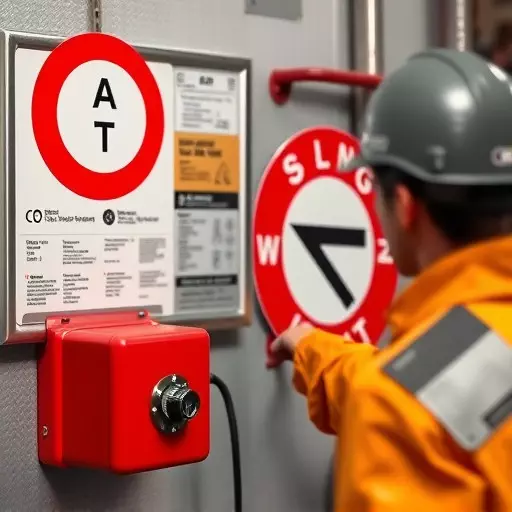Lockout/Tagout (L/T) compliance training is essential for industrial organizations handling hazardous energy sources, as it aligns with OSHA standards to prevent accidents. This rigorous training educates employees on identifying workplace energy hazards, understanding L/T methods, and applying the hierarchy of controls. Regular updates and interactive simulations enhance safety awareness, minimizing risks and ensuring adherence to evolving regulations, fostering a culture of continuous improvement in worker safety practices.
Stay ahead of safety regulations with the latest updates on lockout/tagout compliance training. This comprehensive guide explores OSHA’s crucial role in establishing lockout tagout standards and delves into key components of energy control procedures training. Learn how regular compliance updates are essential for effective workplace safety. From understanding these concepts to implementing robust programs and avoiding common mistakes, gain insights into staying ahead with future trends in lockout tagout training.
- Understanding Lockout/Tagout: A Brief Overview
- OSHA's Role in Lockout/Tagout Standards
- Key Components of Energy Control Procedures Training
- The Importance of Regular Compliance Updates
- Implementing Effective Lockout/Tagout Programs
- Common Mistakes to Avoid During Training
- Staying Ahead: Future Trends in Lockout Tagout Training
Understanding Lockout/Tagout: A Brief Overview

Lockout/Tagout (L/T) is a critical safety practice designed to prevent accidents and injuries during maintenance or repair activities in industrial settings. It involves a systematic process where workers isolate energy sources before performing tasks on machinery, ensuring a safe working environment. This method is particularly essential for industries dealing with electrical, hydraulic, pneumatic, or mechanical equipment, where energy can suddenly activate, causing severe harm.
OSHA (Occupational Safety and Health Administration) has established specific lockout/tagout standards to ensure workplace safety. These guidelines outline the requirements for implementing effective energy control procedures, including the use of locks and tags as visual indicators to communicate the deactivation of equipment. Regular OSHA lockout tagout compliance training is crucial for organizations to stay updated with these standards and educate employees on safe practices, thereby reducing risks and preventing accidents related to unexpected equipment activation.
OSHA's Role in Lockout/Tagout Standards

Key Components of Energy Control Procedures Training

Lockout/tagout compliance training is crucial for any industry dealing with hazardous energy sources to ensure worker safety and prevent accidents. This comprehensive training focuses on key components of energy control procedures, as outlined by OSHA lockout tagout standards. It begins with identifying potential energy hazards in the workplace, which could include electrical, mechanical, or chemical risks.
Training should then delve into the specific energy control methods applicable to each hazard type. This involves learning about different locking/tagging techniques, such as using locks, tags, and interlocks on machinery, and understanding the hierarchy of controls for de-energizing equipment. Employees must be equipped to analyze and implement these procedures, demonstrating a thorough grasp of lockout/tagout protocols, thereby fostering a safer working environment and reducing risks associated with energy control management.
The Importance of Regular Compliance Updates

In today’s dynamic industrial landscape, staying compliant with OSHA lockout/tagout standards is more than just a legal requirement; it’s a matter of ensuring worker safety and preventing accidents. Regular compliance updates are essential to keep up with evolving regulations and best practices related to lockout/tagout procedures, especially in the context of energy control. These updates ensure that workers receive the most current training on safe energy control procedures, including the latest techniques for locking out machinery and equipment.
By integrating these updates into lockout tagout compliance training programs, organizations can foster a culture of safety awareness among their workforce. This proactive approach not only minimizes risks but also helps companies avoid costly fines and legal repercussions associated with non-compliance. Regular training sessions also allow employees to stay alert and informed about potential hazards in their work environments, making them better equipped to handle emergency situations confidently and competently.
Implementing Effective Lockout/Tagout Programs

Implementing effective Lockout/Tagout (L/T) programs is paramount for maintaining workplace safety, especially in industries involving hazardous energy sources. According to OSHA lockout tagout standards, employers are mandated to establish comprehensive procedures that safeguard employees from unexpected energization or release of energy during maintenance and repair activities. This involves rigorous lockout tagout compliance training to ensure workers understand their roles and responsibilities.
Energy control procedures training equips employees with the knowledge to identify potential hazards, select appropriate control measures, and implement them correctly. By adhering to these guidelines, organizations can mitigate risks associated with equipment de-energization, preventing accidents and ensuring a safer working environment. Regular updates to training programs are essential, reflecting changes in workplace practices and regulatory requirements, thus fostering a culture of continuous improvement in safety management.
Common Mistakes to Avoid During Training

During lockout tagout compliance training, avoiding common mistakes is essential to ensure effective energy control procedures and prevent accidents. One frequent error is overlooking proper communication. Teams must clearly understand the intent of the lockout and tagout processes, ensuring everyone involved is on the same page to avoid confusion that could lead to hazardous situations.
Another mistake is inadequate testing of emergency release mechanisms. These devices are critical for swift de-energization in case of emergencies during maintenance work. Insufficient training or neglect in testing these components can result in malfunctional equipment and delayed response times, posing significant risks to workers’ safety. Always prioritize thorough testing as part of your OSHA lockout tagout standards compliance efforts.
Staying Ahead: Future Trends in Lockout Tagout Training

Staying ahead in any industry involves anticipating and adapting to changes in regulations. Lockout/tagout (L/T) training is no exception, especially considering the constant updates from organizations like OSHA to ensure worker safety. Future trends in L/T training will likely focus on digitalizing these essential practices. Online platforms and interactive simulations can enhance learning experiences, making complex energy control procedures more accessible and engaging for trainees. This shift towards digital compliance training allows for better tracking of employee progress and knowledge retention.
Additionally, with the increasing complexity of industrial systems, future L/T training may place a greater emphasis on specific energy sources, such as electricity, hydraulics, and compressed gas. Customized scenarios tailored to various work environments will equip employees with the skills to identify potential hazards associated with different energy control systems. As OSHA lockout tagout standards continue to evolve, staying informed about these trends ensures that organizations remain in compliance and foster a culture of safety among their workforce.


